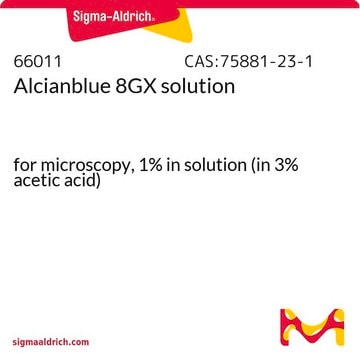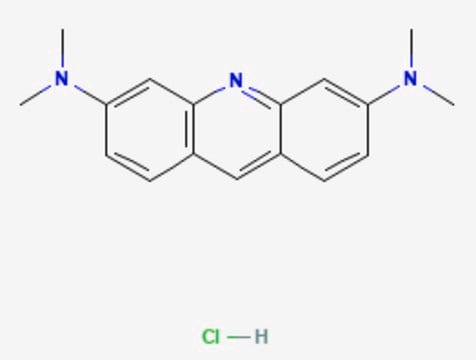A9186
Alcian Blue 8GX
BioReagent, suitable for detection of glycoproteins
Synonyme(s) :
Alcian Blue, Ingrain Blue 1
About This Item
Produits recommandés
Gamme de produits
BioReagent
Forme
powder
Composition
Dye content, ~50%
Technique(s)
electrophoresis: suitable
Adéquation
suitable for detection of glycoproteins
Chaîne SMILES
[Cl-].[Cl-].[Cl-].[Cl-].CN(C)C(\SCc1ccc2c3nc(nc4n5[Cu]n6c(nc7nc(nc5c8cc(CS\C(N(C)C)=[N+](\C)C)ccc48)c9ccc(CS\C(N(C)C)=[N+](\C)C)cc79)c%10ccc(CS\C(N(C)C)=[N+](\C)C)cc%10c6n3)c2c1)=[N+](/C)C
InChI
1S/C56H68N16S4.4ClH.Cu/c1-65(2)53(66(3)4)73-29-33-17-21-37-41(25-33)49-57-45(37)62-50-43-27-35(31-75-55(69(9)10)70(11)12)19-23-39(43)47(59-50)64-52-44-28-36(32-76-56(71(13)14)72(15)16)20-24-40(44)48(60-52)63-51-42-26-34(18-22-38(42)46(58-51)61-49)30-74-54(67(5)6)68(7)8;;;;;/h17-28H,29-32H2,1-16H3;4*1H;/q+2;;;;;+2/p-4
Clé InChI
CKLBXIYTBHXJEH-UHFFFAOYSA-J
Vous recherchez des produits similaires ? Visite Guide de comparaison des produits
Catégories apparentées
Description générale
Application
- for the quantification of sulphated glycosaminoglycan
- to stain differentiated chondrocytes to access proteoglycan′s synthesis by these cells
- to stain Multi-lineage differentiation of hemangioma-derived perivascular cells (Hem-PCs)
- in histological staining to detect neutral and charged carbohydrate residues
Code de la classe de stockage
11 - Combustible Solids
Classe de danger pour l'eau (WGK)
WGK 3
Point d'éclair (°F)
Not applicable
Point d'éclair (°C)
Not applicable
Équipement de protection individuelle
Eyeshields, Gloves, type N95 (US)
Certificats d'analyse (COA)
Recherchez un Certificats d'analyse (COA) en saisissant le numéro de lot du produit. Les numéros de lot figurent sur l'étiquette du produit après les mots "Lot" ou "Batch".
Déjà en possession de ce produit ?
Retrouvez la documentation relative aux produits que vous avez récemment achetés dans la Bibliothèque de documents.
Les clients ont également consulté
Notre équipe de scientifiques dispose d'une expérience dans tous les secteurs de la recherche, notamment en sciences de la vie, science des matériaux, synthèse chimique, chromatographie, analyse et dans de nombreux autres domaines..
Contacter notre Service technique











